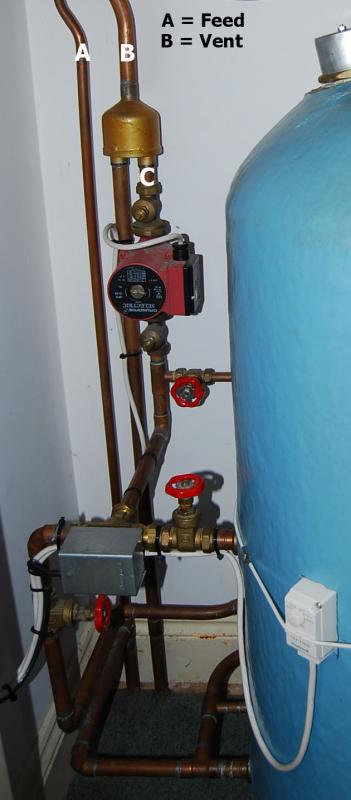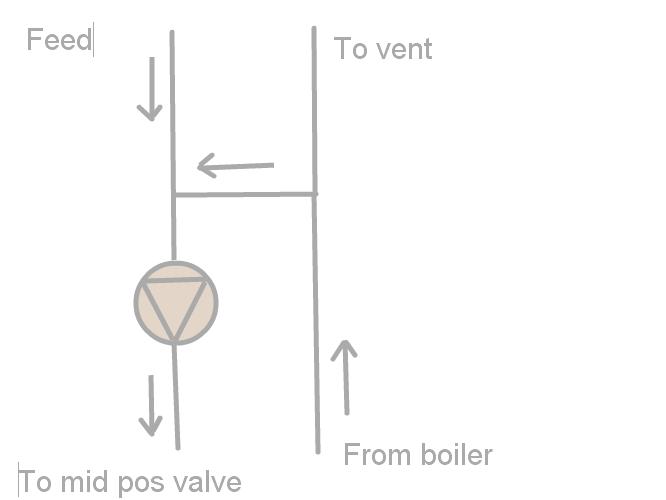Hi Folks, I'm sure this question has been answered many times before but my CH system doesn't seem to be like anyone elses.
Air is being sucked into the system via the vent pipe. If you hold a glass of water over the end of it in the loft and turn the system on, the water gets sucked out of the glass.
The system is about 15 years old and I've been told by a couple of plumbers "I wouldn't have done it like that!"
Now it's winter and the heating is on more, the sound of air rushing around the system is driving me up the wall. For some reason it's a lot worse this year - ever since I cleaned the system out, not having been done for at least 13 years. Everything works fine, it's just the air that is the problem.
I've read that t-ing the feed into the vent could stop the problem. If so, looking at my photo, do I connect pipe A to pipe B, or Pipe A to pipe C.
Or if there is a better way altogether, I'd love to hear about it.
Thanking you in anticipation.
If God had intended me to be a plumber, he would have given me webbed feet!
Air is being sucked into the system via the vent pipe. If you hold a glass of water over the end of it in the loft and turn the system on, the water gets sucked out of the glass.
The system is about 15 years old and I've been told by a couple of plumbers "I wouldn't have done it like that!"
Now it's winter and the heating is on more, the sound of air rushing around the system is driving me up the wall. For some reason it's a lot worse this year - ever since I cleaned the system out, not having been done for at least 13 years. Everything works fine, it's just the air that is the problem.
I've read that t-ing the feed into the vent could stop the problem. If so, looking at my photo, do I connect pipe A to pipe B, or Pipe A to pipe C.
Or if there is a better way altogether, I'd love to hear about it.
Thanking you in anticipation.
If God had intended me to be a plumber, he would have given me webbed feet!




